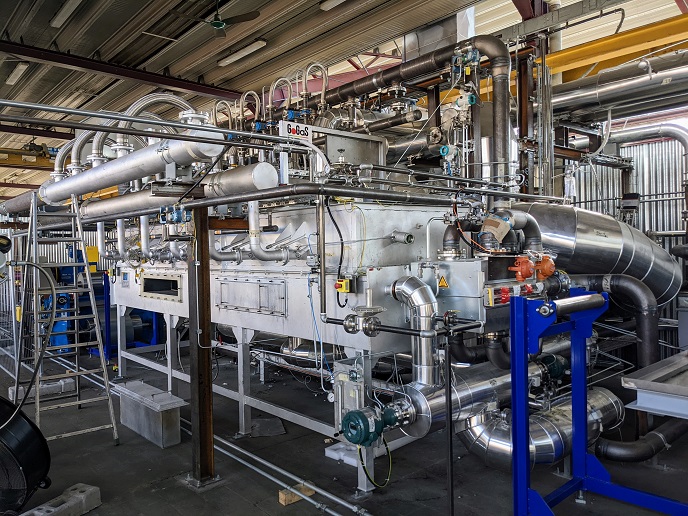Clean, energy-efficient coil coating thanks to new oven technology
Widely recognised as the most effective way to pre-paint steel and aluminium substrates, coil coating(opens in new window) is a continuous and highly automated industrial process for efficiently coating metal strips. After the paint is applied to the metal strip, it is dried while the solvents evaporate. Afterwards, the paint is cured up to a certain temperature, where the crosslinkers increase the adhesion between the pigments and the metal strip.
Resolving solvent flammability issues
Conventional curing ovens rely on fans that allow heat to be transferred via convective heat transfer. The minimum concentration of solvents necessary to support their combustion in air are defined as the lower explosive limit. Below this level, the mixture is too lean to burn. Preventing the emission of volatile organic compounds entails either solvent recovery or thermal decomposition, which are both complex and expensive. Supported by the EU-funded ECCO(opens in new window) project, researchers unveiled a proof-of-concept curing system that shows promise in breaching the above issues. The oven system is divided into two sections. The first one is the radiant burner section, where intense infrared radiation is emitted at high temperatures resulting from solvent combustion taking place inside a ceramic porous structure. “The second one is the pure curing system that operates at increased solvent concentrations, allowing the direct utilisation of solvents as a fuel for heat generation,” explains project coordinator Dimosthenis Trimis.
Coil coating system operation explained
Flue gases from the radiant burners are directed into the curing oven, where they are mixed with solvent vapours. This gaseous mixture is then extracted from the curing oven and fed to the radiant burner: the solvent vapours are used to power the burner, whereas flue gas recirculation allows operating conditions with oxygen concentrations below the limiting oxygen concentration, ensuring explosion safety. The two units are separated by infrared-transmitting glasses. Researchers tested the ability of different materials to maximise transmission in the infrared and withstand the thermal stresses during oven start-up, operation and shutdown. Catalytic coatings preventing the deposition of carbonaceous substances on the glass at high temperatures were also developed. The porous burner consists of advanced composite materials based on silicon carbide that tolerate higher operation temperatures compared to other widely used materials. An experimental facility was used to test solvent combustion in structured porous media.
Innovative technology, multiple benefits
“The technological solutions presented by ECCO could greatly help retrofit existing coil coating production lines. They enable reductions in energy consumption by over 50 % compared to old or new oven installations. Assuming the same production capacity, the ECCO curing oven is more compact (70 % lower volume) compared to conventional ones relying on additional units such as regenerative or recuperative incinerators,” remarks Trimis. The recovery of solvent vapours from the drying/curing process eliminates waste production. Furthermore, the radiant porous burners are fuel flexible; they can run on either solvent vapours or natural gas (or a mixture of both). Coil coating applications abound in everyday life. Numerous household appliances, including refrigerators, washing machines and toasters, use some form of pre-painted steel or aluminium in their construction. ECCO presents a less energy-demanding, environment-friendly and economical solution for various markets.







